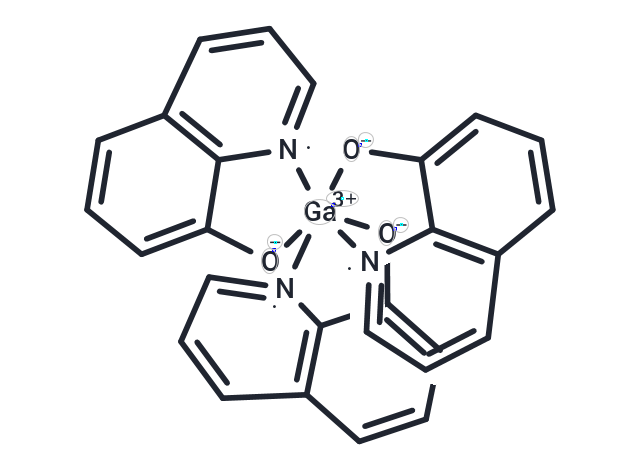Shopping Cart
- Remove All
 Your shopping cart is currently empty
Your shopping cart is currently empty

Gallium 8-Hydroxyquinolinate is an inducer of apoptosis that initiates both p53-dependent and independent cell death in cancer cells through the induction of Ca2+ signaling transduction. In addition to its apoptotic properties, this compound's nanostructures exhibit excellent optical performance, making it suitable for use in tumor research.

| Pack Size | Price | Availability | Quantity |
|---|---|---|---|
| 25 mg | $1,520 | 2-4 weeks | |
| 50 mg | $1,980 | 2-4 weeks | |
| 100 mg | $2,500 | 2-4 weeks |
| Description | Gallium 8-Hydroxyquinolinate is an inducer of apoptosis that initiates both p53-dependent and independent cell death in cancer cells through the induction of Ca2+ signaling transduction. In addition to its apoptotic properties, this compound's nanostructures exhibit excellent optical performance, making it suitable for use in tumor research. |
| Alias | Tris(8-hydroxyquinolinato)gallium |
| Molecular Weight | 502.17 |
| Formula | C27H18GaN3O3 |
| Cas No. | 14642-34-3 |
| Storage | Powder: -20°C for 3 years | In solvent: -80°C for 1 year | Shipping with blue ice. |

Copyright © 2015-2025 TargetMol Chemicals Inc. All Rights Reserved.